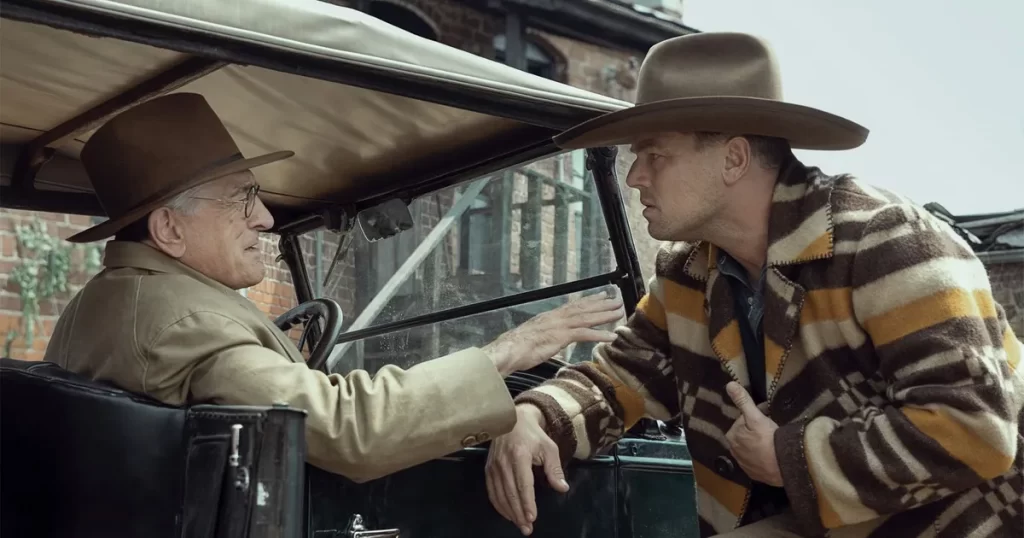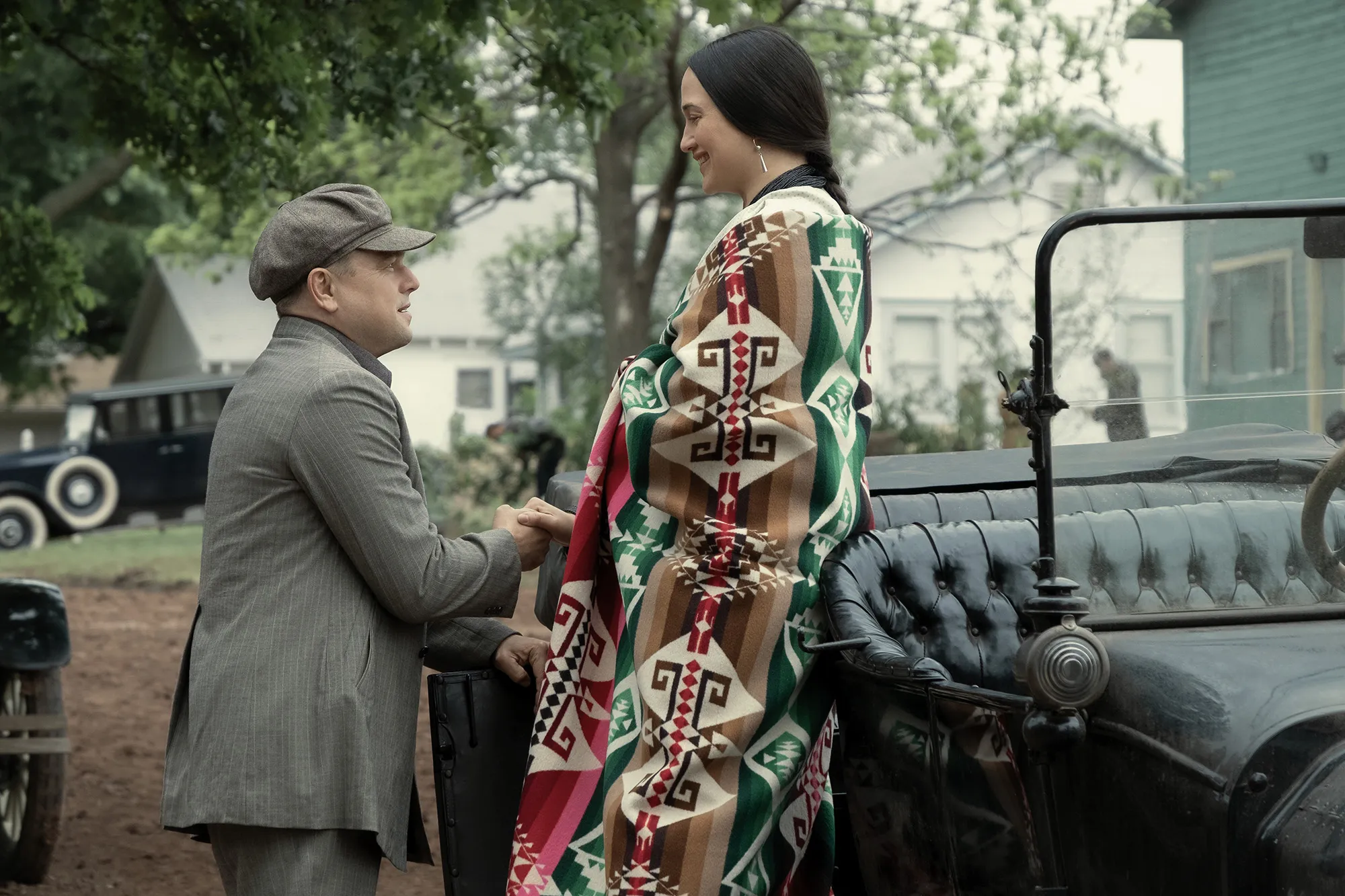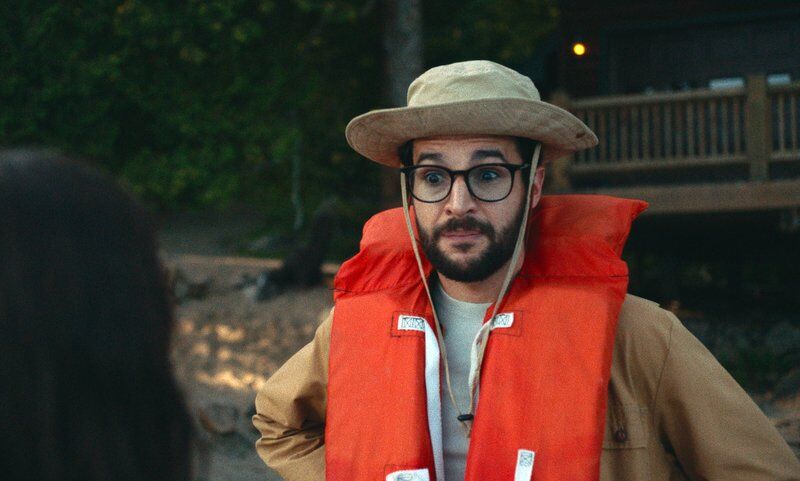Explain the Ending of the Killers of the Flower Moon. Killers of the Flower Moon is a perfect THiNC. movie. PERFECT. Why? Because it will really force you to grapple with the history (the real unvarnished history) of the United States, and really realize just how horrible we can be to anyone that has something that we want. It’s a really compelling story. But I just have to be honest with you, this movie is probably the most self-important piece of cinema I have ever watched. Almost every scene I’m wondering if they asked everyone in the scene to improvise off their lines and the script… and they just went with the longest takes they had. Awful. But the movie, even in spite of that? Amazing.
Should You See Killers of the Flower Moon in the Theater?
This is going to sound like a joke response… but, it’s not. How big is your bladder? This movie clocks in at an inelegant 3 hours and 26 minutes. That’s two hundred and six minutes for the mathematically challenged among us. That is an eternal excursion to your local movie theater. And not to belabor the point above (get used to it, it’s going to keep coming up throughout this review/discussion) but holy hell, did Martin Scorsese even let Thelma Schoonmaker touch his dailies? Man! Every take is twice as long as it needs to be. I get it, sometimes a film needs to be more introspective and thoughtful… that’s not what I’m haranguing against. Much of the dialogue rambles so much that I wonder if the film was attempting a more ad hoc, made up on the spot, sort of feel to it? And some of the screenplay decisions are just atrocious. But I’m going to just step beyond all of that, and answer the question at hand directly… it’s a really amazing story. It’s an amazing aspect of history that I’m sure many have no idea happened. And it’s a really dark stain (oil stain?) on our past. But it cements a very clear part of our history… if you have something this country wants? We will take it. And we will ruin you in the process.
The Historicity of Killers of the Flower Moon
It is true that the Osage Nation members became some of the richest people in the world after oil was discovered on their land. But a string of murders when scores of people started becoming suspiciously ill or died became known formally as the Reign of Terror. It is widely reported that Scorsese worked closely with Osage Nation members in order to bring this crushingly heartbreaking true story to the silver screen. And what about that weird radio drama ending? Yeah, that happened too. But we’ll get to all of that in a minute. Let’s not get ahead of ourselves.
Killers of the Flower Moon Walkthrough
The story opens in 1919 with the tale of the Osage Native Americans who happened to be forcefully settled on land that was found to be awash in oil. This immediately has the impact of making the Osage some of the richest people on the planet. But the Native Americans that own the land where the oil is found were required to work through “guardians” in order to handle their money. (I mean… come on.)
Ernest Burkhart (Leonardo DiCaprio – Revanant, etc., etc.), the nephew of William King Hale (Robert De Niro, Raging Bull etc., etc.), returns from the Great War looking for work. As he has a gut wound, he can’t lift anything, so Hale puts him to work as a driver on his ranch. Now, Hale is a very friendly advocate to the Osage people throughout the area. He is able to speak their language, he creates businesses, and philanthropic opportunities for the community (dance studios, parks, etc.) He was a real hero and trusted friend of the Osage people.
As the movie continues to unfold, we watch as we see the Osage, and how they deal with their new found wealth. It’s a really interesting juxtaposition of how you normally watch Native Americans be depicted on film. But soon enough, we start to realize that this “blessing” is really an epic curse because it has started to bring about the deaths of numerous members of their tribe. Women are dying through some sort of “wasting disease,” and men are being shivved, assassinated, and blown up. And no one is looking into any of these deaths.
Unbeknownst to Ernest, Hale asks him to pay special attention to Mollie Kyle, a single Osage woman whose family has enormous oil headrights. Soon enough, Ernest and Mollie fall in love and get married. Mollie’s family members begin dying, sisters that are murdered strangely, and also of the wasting disease… and as they die, Hale informs Ernest that he will begin to accrue a larger share of Mollie’s family’s wealth. Huh. Nice coincidence. I guess. Weird, but okay. We are also beginning to catch glimpses of Ernest’s violent and robbery filled lifestyle. But there are a group of the Osage that are starting to become outspoken about the deaths, and have even begun to fight back by hiring personal detectives.
Mollie is a real problem with how outspoken she is. She’s got to be quieted down. If they aren’t all careful, Mollie will cause them real trouble. So Hale asks Ernest to add a drug to Mollie’s insulin each day in order to make certain that she “gets quieter.” It is unclear if Ernest believes he is actually murdering his wife, or just subduing her. But he has to have an inkling of what might be happening here. And yet, DiCaprio really does a great job of communicating to the audience just how stupid this guy might have been. So, to me, it’s really unclear how culpable Ernest was in all of this. Sure, he was horrible. But was he downright evil? Maliciously?
Then Hale steps up his attack on various important members of the Osage families. He orders the murders of Henry Roan, Mollie’s first husband… but he tells Ernest it needs to look like a suicide. He did have the melancholy after all. But when it goes down with a shot to the back of the head? Wow, that spirals things out of control. And he also asks Ernest to order the murders of Rita, Mollie’s final remaining sister, and her husband, by having the house blown up. Talk about going big?!? But as a result, Mollie now owns all of the family’s headrights. Better yet, upon Mollie’s death, Ernest will receive all of the headrights. Worse for the Osage, all the help they thought they had coordinated from D.C. in both a lobbyist and a PI, are all murdered.
Done leaving the murder investigations to others, the Osage travels to Washington – including Mollie – in order to see if they can’t get President Coolidge to intervene. (And with a donation of $30,000, it shows they know how the wheels of the American political system works.) Tom White, an agent from the Bureau of Investigation, soon after is dispatched to get to the bottom of these insidious murders.

Blog Post Intermission…. Feel free to get up, stretch, go to the bathroom before continuing on. (I swear this movie needed a freaking intermission! Have I mentioned yet what it needs more than an intermission was an actual editor? hahah.) Regardless, you are only half way in… buckle up, we still have a long way to go!
Quickly, Tom White realizes who is behind the murders, deaths, and the wasting diseases that have been hitting the reservation. Hale attempts to throw White off his tracks by murdering as many of his accomplices as he can. It doesn’t matter though, White is pretty dialed in on what is actually going on here. Hale, in order to save himself, throws his nephew under the bus and promises that his lawyers will protect him. Sure they will, it’s in Hale’s best interest to have both Mollie and Ernest die in whatever convenient way possible. Ernest is arrested, and eventually the agents come and find Mollie, nearly dead, and they nurse her back to health. And it is the death of one of Ernest’s remaining children that ultimately forces him to testify against his uncle.
Explain The Ending of Killers of a Flower Moon Movie
There are a couple of moments as the movie winds down that aren’t simple to grok if you aren’t 100% dialed in on what is going on. The final chat between Ernest and Mollie, what is going on there? Well, Mollie had been pretty trusting of Ernest throughout their marriage. I’m pretty sure she knew he wasn’t lily-white in all his business dealings. OK. But she obviously had no idea what an enormous part he was playing in her family’s deaths. And there she was, sitting in the courtroom, watching as he admits to murder after murder all to connect Hale back to the money, and to the larger, more devious plan that he was enacting. So Mollie asked Ernest, “What was in the insulin?” And his answer? “Insulin.” Right?
BUT WHAT DOES THAT MEAN?
Well, it means Ernest is even dumber than he seems. All along the way, Ernest was matched with Molly by his uncle, and he didn’t realize he’d already been played. He had no idea that Hale had played him already. He didn’t connect any of the dots. But eventually, he puts it all together and testifies against him. But Hale talked Ernest into, AT THE VERY LEAST, drugging his wife. Ernest knew that Hale wanted to quiet this really quite loud woman down. She was hiring private detectives. She was going to D.C., lobbying the President, making a lot of noise for Hale. And Hale wanted her quiet. Now, the question is simple, was Hale murdering Mollie through Ernest? Yes, yes he was. How do we know? Well, it was happening to the other sisters and other Osage who were dying of “wasting disease.”
But here’s the real question… did Ernest know that Hale was attempting to use him to kill his wife? That was Molly’s real question. What was in the vial (vile?) Ernest? Were you murdering me Ernest? And Ernest’s answer… yes, Molly… I was murdering you. And although he just said Insulin, he might as well have written on a building.
Okay, I get that part now… but that crazy radio theater business? What the heck? Well, that is actually where the story originally came from for the book. The Lucky Strike Radio show is how the story of the Osage murders became famous across the country. Like in real life. Which is what gave Scorsese the idea for the ending. It’s an homage. The epilogue basically informed the audience that Ernest received a life sentence (which I didn’t even grasp because of the weirdness of the ending). And so did his uncle Hale. Ernest was eventually paroled, as was Hale, and they lived separately. And Mollie? She divorced Ernest, and died at age 50 from diabetes. Okay?
Final Thoughts on the Movie Killers of the Flower Moon
Some movies do well with a slower unwinding of the clock. They heave under the weight of the story, and lumber towards their inevitable denouement. I’m thinking of other historically accurate Native American based films like Dances with Wolves maybe? Or Water World (OK, that was a joke.) OK, maybe like Schindler’s List? But the moral heft of that movie makes sense. But here, the pace just seemed out of place. And it wasn’t like the writing was tight either. It felt like Scorsese had the actors do a take with the screenplay as is, and then asked them to ad lib, and he always went with the ad libbing takes. If that makes sense. The edit was just so very loose. I could deliver you a 2.5 hour edition, literally without cutting a single line, or changing anything substantially at all. I’m not even exaggerating here. Cut out the waffling of Ernest’s flipping at the end? 2 hours. Done. Voila. Magical… the movie is 200% better.
And yet, the story is just so compelling. The Osage’s riches? “These are Osage prices!” Fascinating. Horrible. But fascinating. I couldn’t look away. So much so I had to go get ahold of the book version and read that too. But if only they had tightened up that edit I think you might have had a lock for a Best Film Oscar. There’s no way though… not with a 3.5 hour cut anyway.
Edited by: CY



